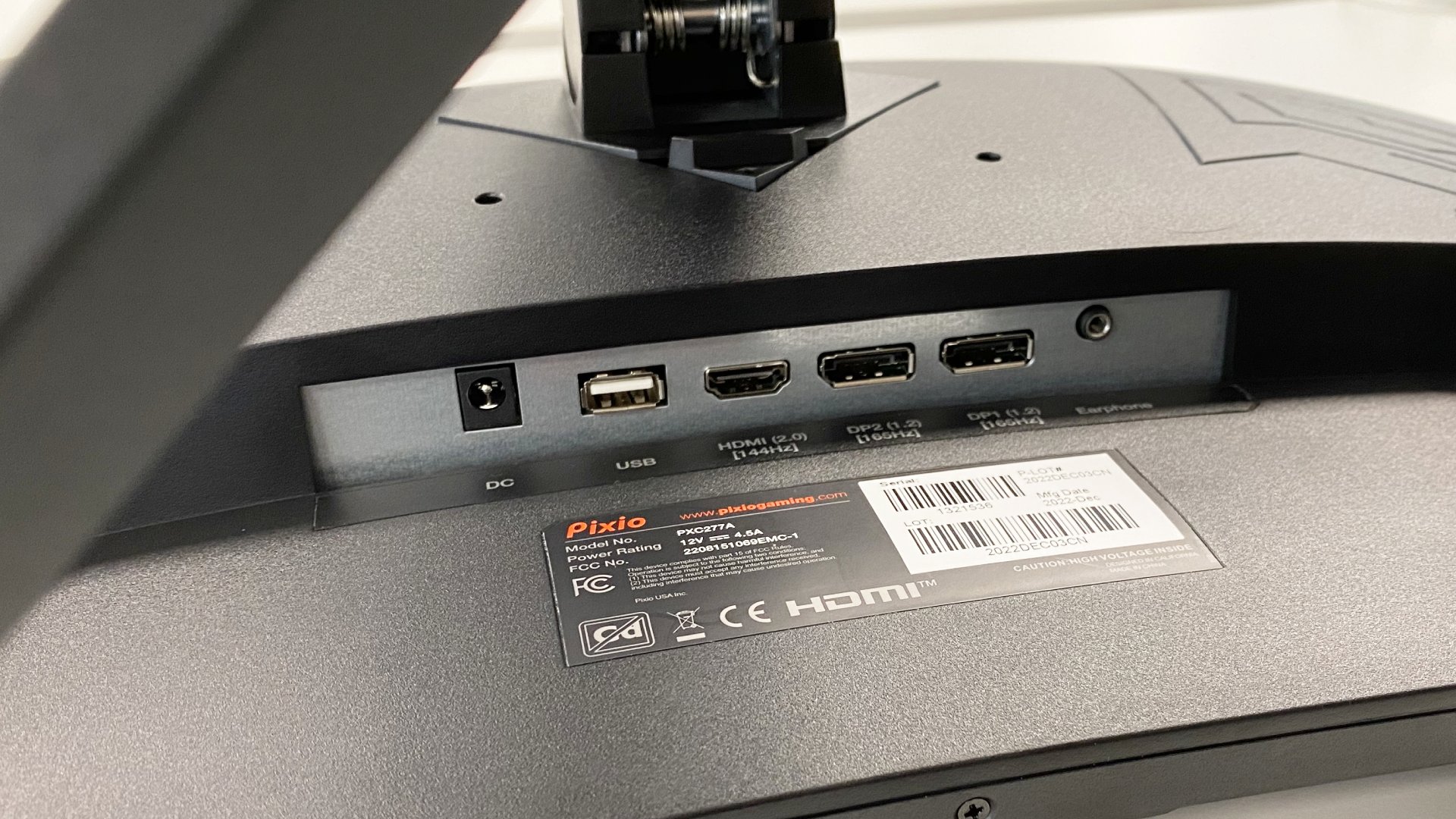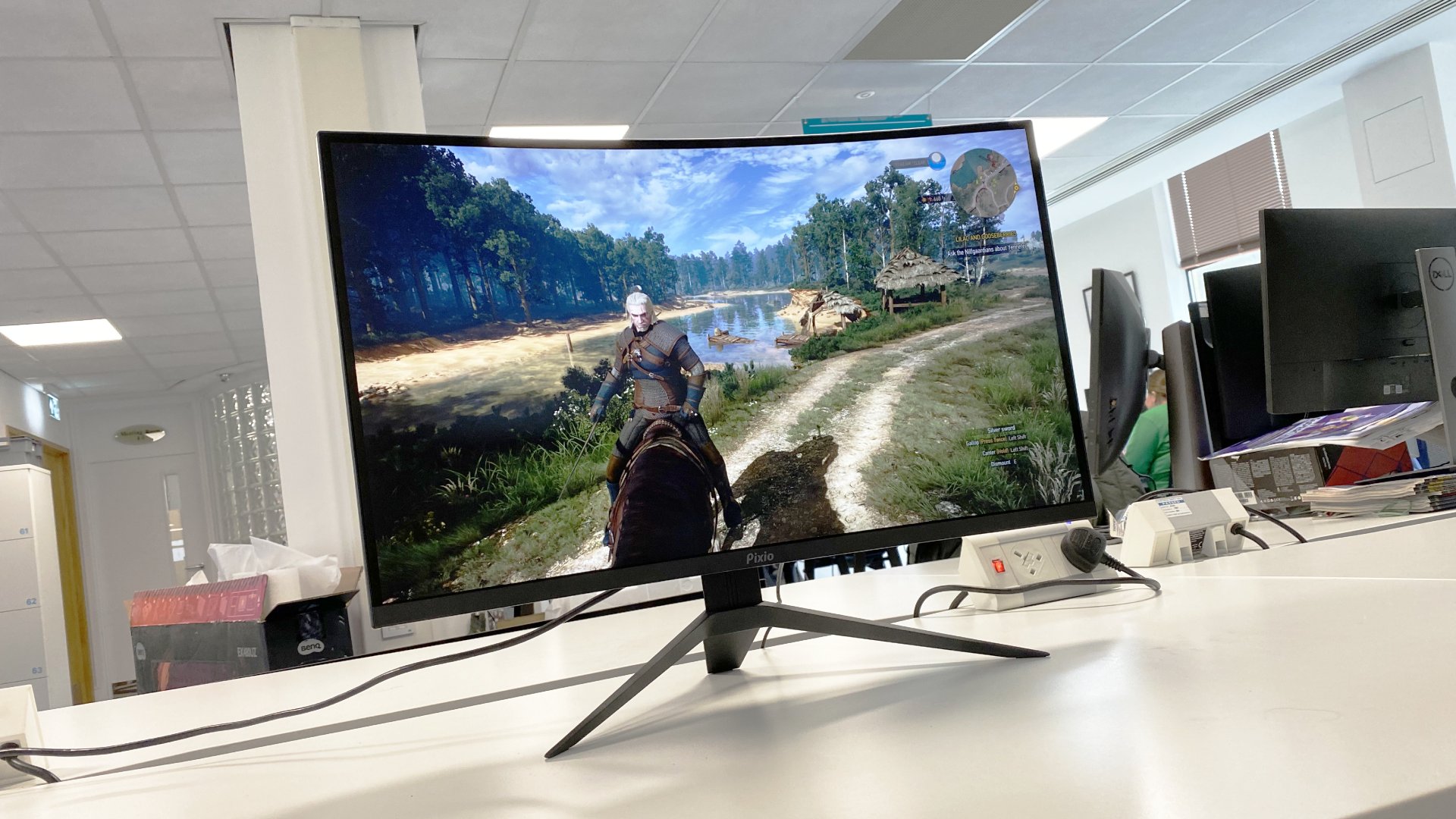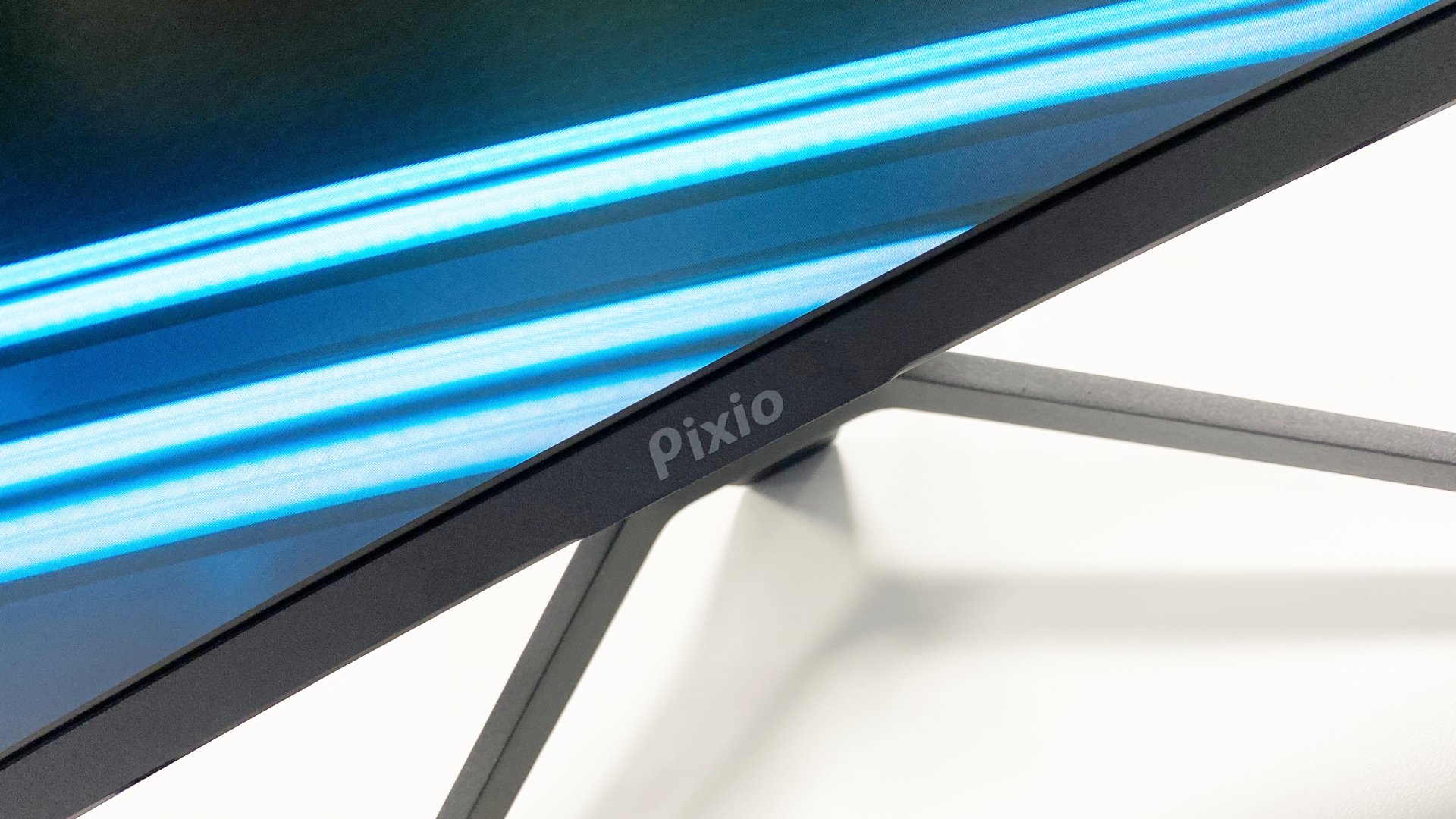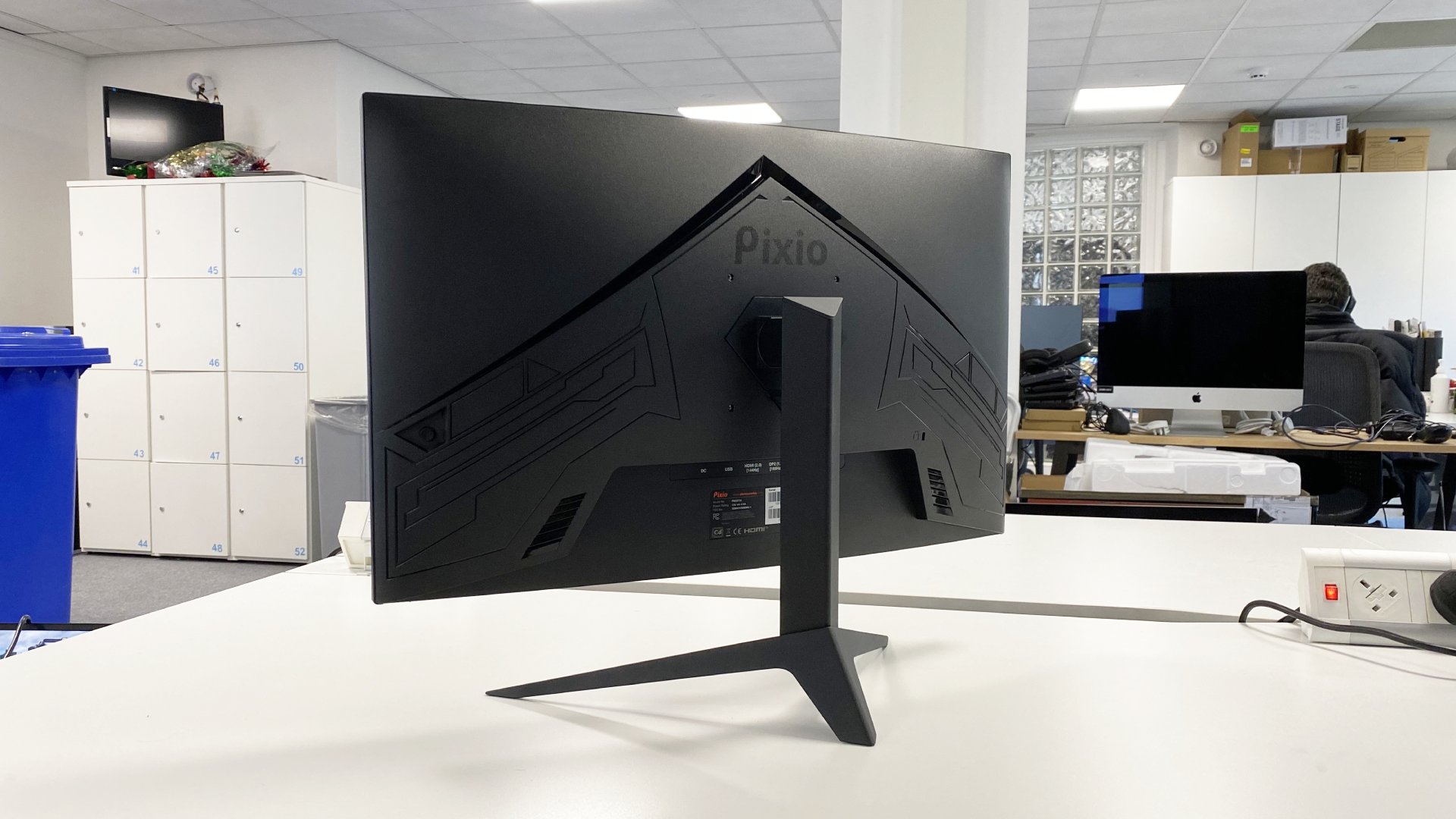Our Verdict
$240 for a high-refresh 1440p panel? Really? Yup. The 165Hz Pixio PXC277 Advanced does almost everything pretty well. Sure, the HDR support is extremely limited. But for the money, this is a surprisingly lovely all-round gaming monitor.
For
- 1440p 165Hz panel
- Excellent contrast
- Decent pixel response
Against
- Very limited HDR support
- Tilt-only stand
- Slightly pointless panel curve
PC Gamer's got your back
Mini-LED and QD-OLED panel tech, monster screen sizes, and manic refresh rates. Take your pick, it's all available for a price. But what are the actually essential ingredients for a good gaming monitor and how much will that cost you?
If the PXC277 Advanced is even half decent, it's a steal for $240.
On paper, the answer might just be $240 with the new Pixio PXC277 Advanced. It's a 27-inch 1440p panel with 165Hz refresh and 1ms claimed response. Oh, and HDR support. That's one heck of a package for the price.
It also meets pretty much all our key metrics. 1440p on a 27-inch panel remains a great all round compromise between size, pixel density, and GPU load. Likewise 165Hz is plenty for all but the most demanding esports addicts. Ditto 1ms response, in theory.
Beyond those headline specs, there are one or two more dubious data points. But at this price point, you can hardly expect perfection. Put it this way, if the PXC277 Advanced is even half decent, it'll be a steal for $240. That's a very small fraction of the $1,000 required for a 27-inch OLED monitor like the LG UltraGear 27GR95QE-B, for instance.
Indeed, this monitor is so aggressively priced, the immediate worry is what corners have been cut. Out of the box, the main chassis of the display feels disconcertingly light. But it's well enough put together.

Screen size: 27-inch
Resolution: 2560 x 1440
Brightness: 320 nits peak
Response time: 1ms
Refresh rate: 165Hz
Viewing angle: 178° H&V
Contrast ratio: 4000:1
Features: VA panel, 95% DCI-P3, Freesync Premium, 2x DisplayPort 1.2, 1x HDMI 2.0
Price: $240 | £250
With slim bezels on three sides, plus a bit of a chin, and a crisp metal stand, the PXC277 doesn't actually look like a bargain basement item it might have done. The external power supply does admittedly drag the tone down. It's a generic item with a cheap looking Pixio sticker slapped on the side. And the aforementioned stand is tilt-only.
Similarly, the contents of the box are conspicuously short on frills. There's a single DisplayPort cable and no HDMI cable. But you know what? We're fine with all that. DisplayPort is essential to hit the full 165Hz and they give you a cable for that. And who doesn't have a few spare HDMI cables in a drawer? If leaving out a few cables keeps the price down and saves on e-waste, it's all good by me.
Keep up to date with the most important stories and the best deals, as picked by the PC Gamer team.
For the record, the PXC277 Advanced actually has dual DisplayPort 1.2 connections, a single HDMI 2.0 socket and a headphone jack. And that's it. No USB-C, no USB-A hub. And, again, at this price point that's just dandy.
Ostensibly, there's HDR support. But unsurprisingly, the backlight is monolithic. There's no full-array local dimming and the rated brightness tops out at 320 nits, which is modest by today's standards.
That said, the claimed native contrast of the panel is 4,000:1, which is impressive and betrays the fact that Pixio has gone for VA rather than IPS technology. VA is typically that little bit cheaper than IPS, making it an inevitable choice for a low-cost gaming monitor. The upside is that excellent contrast, which is around four times better than a typical IPS screen. The downside is usually response. VA tends to be slower than IPS.
Pixio is claiming 1ms, however, and that's using the gray-to-gray measure rather than the more forgiving MPRT metric. That puts it on par, in theory, with far more expensive monitors. It's all very promising.
As for the actual image quality and gaming experience, well, there are no immediate horrors. Phew. The panel's default calibration is reasonably accurate and there are none of the weird sharpening filters or backlight blotchiness you sometime see on really cheap panels.
Even with the backlight set to maximum, this admittedly isn't the punchiest display. But it's reasonably vibrant and the inherent contrast of the VA panel tech delivers good black levels. The basic desktop experience in SDR mode is pretty pleasing.
As for pixel response, that's a bit more complicated. The Pixio's OSD menu gives you access to three levels of pixel-accelerating overdrive. The fastest option suffers from some of the worst overshoot we've seen in ages. That mode, presumably, is required to hit the claimed 1ms.
Even the middle overdrive setting has some very obvious inverse ghosting. However, that mostly disappears with overdrive set to low and the resulting response surprisingly good. There's little of the usual smearing and obvious blurring you get with more sluggish VA screens.
Is it as quick as the best IPS monitors? Nope. But you'd have to look pretty hard to spot the difference. We'd call that a win at this price point.
Less impressive, predictably, is the panel's HDR performance. It will process an HDR signal and punch out broadly correct colours. But it's not remotely a real HDR experience. The HDR calibration also has some compression at the high end which results in bright details being blown out.
Moreover, HDR mode is no brighter or more dynamic than SDR mode, so there's little point in using it, especially when it also offers worse SDR calibration than SDR mode itself.
But once again, that's OK. Thanks to the high-contrast VA panel, this is actually quite a dynamic panel in SDR mode. As a for instance, the neon lights in Cyberpunk's underground bar scene pop really nicely against the inky black backgrounds. This is genuinely a nice-looking display.
The same applies in brighter outdoor gaming arenas. The outright brightness can't compete with, say, a mini-LED monitor. But it's actually brighter than an OLED monitor based on LG panel tech. Put this monitor next to one of those and you'd struggle to justify the 4x price premium, you really would.
The Pixio PXC277 Advanced does almost everything pretty well.
As for more speed-orientated gaming, the news is good here, too. The 165Hz refresh makes for zippy responses and nicely controlled latency. Put simply, we have no complaints.
So, we came into this review hoping for a monitor that would do a bit of everything. The 2,560 by 1,440 pixel grid promised a decent desktop experience, on paper the VA panel had the right specs to deliver lots of detail in the latest triple-A eye candy titles while also being quick enough to be a decent option for online shooters.
And you know what? That's exactly what this monitor delivers. At this price point we were willing to make a few excuses. But that's not actually necessary. The Pixio PXC277 Advanced does almost everything pretty well.





The one exception is HDR. However, because the specs make it clear this isn't a true HDR panel, we can't see the point in complaining that HDR support isn't really a usable feature. So, it says a lot that our biggest complaint along with the lack of height adjustment from the stand is that the panel is curved. It just doesn't add much to proceedings on a 27-inch 16:9 monitor.
Then again, it doesn't take much away either, thanks to its gentle 1500R radius. So, let's stick that in the box with the other minor demerits we're okay with. Indeed, we are in a broader sense okay with this monitor. And then some. Which is more than we were hoping for the money.
$240 for a high-refresh 1440p panel? Really? Yup. The 165Hz Pixio PXC277 Advanced does almost everything pretty well. Sure, the HDR support is extremely limited. But for the money, this is a surprisingly lovely all-round gaming monitor.

Jeremy has been writing about technology and PCs since the 90nm Netburst era (Google it!) and enjoys nothing more than a serious dissertation on the finer points of monitor input lag and overshoot followed by a forensic examination of advanced lithography. Or maybe he just likes machines that go “ping!” He also has a thing for tennis and cars.





